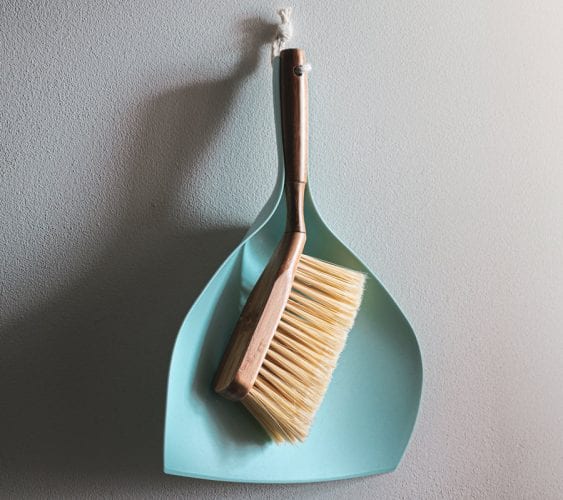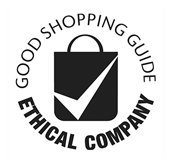Eco-friendly cleaning tips for a greener home
Clean your house whilst saving money and the planet too with our eco-friendly cleaning tips
Backyard barbecues, dinner parties or just a few drinks with friends – we’re looking forward to hosting in our homes again soon. Is your home ready to receive or is it in need of a good old spruce up? Yeah – ours too. So, with that in mind, we’ve rounded up some top eco-friendly cleaning tips for a good old spring clean!
Many cleaning products on the market today are still full of chemicals that may well kill bacteria and bust grime, but they also go straight from our drains into the waterways, and are harmful for the environment. They also come with a hefty load of plastic packaging too.
Eliminating unnecessary plastic and creating solutions that are better for your health and our planet too are high on the agenda for us here at Mooncup Ltd. Read on for our favourite DIY and eco- friendly cleaning tips, which will save you money too. It’s time to clean up our cleaning act!
1. Five Sustainable store cupboard cleaning staples
When it comes to your go-to cleaning product ingredients, the oldies are often the goodies. Old-fashioned cleaning methods are often better for the planet, and cheaper too. Plus, you’re likely to find almost everything you need in your cupboard already!
Let’s start with sustainable cleaning staples you may already own: vinegar & bicarbonate of soda, lemons, essential oils and a good old dustpan.
Vinegar & bicarbonate of soda – the classics
Vinegar and bicarbonate of soda (aka ‘bicarb’ or ‘baking soda’) are household names in the cleaning department and have been used for decades to get rid of grease and grime.
You can’t go wrong with a bulk-bought bottle of white vinegar in your cupboard. Vinegar and its acidic nature make for a powerful cleaning agent capable of dissolving dirt, grime, grease and mineral build-up, and is also a natural antibacterial.
Eco-friendly toilet cleaning tip:
- Get the water out your toilet bowl reusing a pot or jar to scoop it out.
- Fill the base (up to where any “tide” marks might have gathered) and leave overnight.
- Next day, quick rub with a sponge and your toilet will be sparkling again!
Bicarbonate of soda has been valued for its antibacterial properties since the 1920s. It’s also ideal for removing smells!
Mixed together, vinegar and bicarb make a fizzing combo that will tackle the limescale and grime build up in your pipes for instance.
Using bicarbonate of soda can actually also be a great way of removing any stains from your Mooncup menstrual cup. It’s normal to get some staining on your Mooncup© over time – but as long as you follow the cleaning and care instructions, it doesn’t mean it isn’t clean. To remove stains from your Mooncup with bicarb, simply:
- Get a clean, damp cloth or a toothbrush with plenty of bicarb and rub it onto the stained area.
- Rinse your Mooncup thoroughly with clean water.
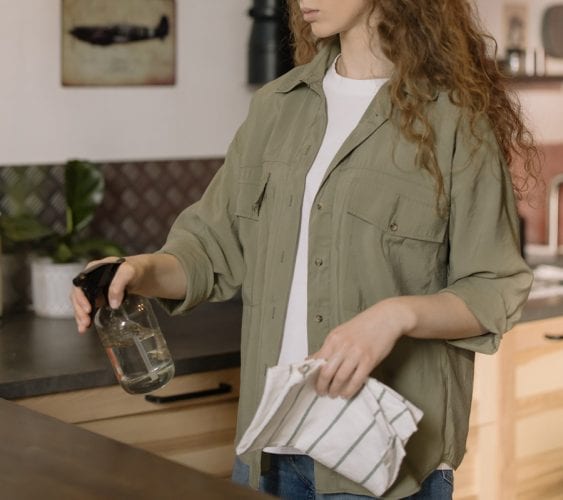
You can mix bicarbonate of soda with lemon juice to make a cleaning paste that’s great for cleaning sinks and getting them back to their white condition. You can also slice lemon in half, cover the cut section in bicarb and use it to scrub surfaces or dishes to remove stains.
That brings us on to lemons…
When life gives you lemons… clean with them
Lemons follow closely behind bicarb and vinegar on the eco friendly cleaning ingredient essentials list. The anti-bacterial, antiseptic, and natural bleaching virtues of lemon juice have been a blessing for the cleaning world for decades too!
Me and my partner drink a slice of lemon in hot water every morning. And then – waste not want not, we pop the used lemon slices in the kettle to descale it. You then just boil the kettle with some water and the lemons in, remove the lemons and rinse it out, and it’s ready for your next cuppa! – Jo, Mooncup Ltd. Sales Coordinator
One or two lemons alone can be enough to get a head start on tackling the grease and grime in your oven. You coudl start with this simple steam clean:
- Fill an oven-proof bowl with water.
- Squeeze the juice of one or two lemons (or limes) into the bowl and place it in the oven and turn it on
- As soon you see the water start to boil, turn the oven off but leave the door closed while the water cools down and the steam circulates.
If you are after a spring clean with knobs on, mix 1 cup of olive oil with 1/2 cup lemon juice and you’ll have yourself a great natural polish for hardwood furniture!
Three essential essential oils for keeping your house clean and fresh
As well as adding a floral note to your cleaning mixtures, essential oils also have natural antibacterial, antifungal, antiviral and antiseptic properties. Here are some of the essential oils you might want to keep on your shelf to freshen up your home:
- Tea tree oil – if you could only have the one essential oil then it would have to be tea tree. With its antimicrobial, antifungal, antiseptic, bactericidal, and insecticidal properties, it’s a great ingredient to add to all homemade cleaning solutions.
- Lavender oil – this naturally lovely fragrance is not only a disinfecting addition to your surface cleaner, but its scent has also been shown to help with sleep, so adding a few drops in a water spray for your linen will leave you and your sheets feeling fresh! A few drops of lavender can also help to keep moths away from your closets and drawers.
- Peppermint oil – another antibacterial and antifungal oil that makes a great addition to your multipurpose cleaner. It also acts as a natural bug repellent – great for fleas on your pets and aphids on your houseplants! Its powerful, refreshing scent means it’s great for tackling smells too – pop a few drops at the bottom of your kitchen or bathroom bin and it will mask any nasty odours.
Unplug and sweep up!
In our click-happy society, it’s all too easy to flick a switch, but before you plug in that vacuum cleaner or Dustbuster, remember to reach for the good old-fashioned method for those small dust and dirt patches: the dustpan and brush.
If you’re on the market for a new vacuum cleaner, it’s worth doing your research: where is the vacuum made, by whom, and what are the ethics behind the company manufacturing it (it’s also worth asking these questions when choosing your menstrual cup!)? Following a court case by Dyson, there are no longer energy labels on vacuum cleaners, but Ethical Consumer has put together this handy guide to help you make your mind up.
Do It Yourself – eco-friendly cleaning tips and products you can make at home
If you stock up on your store cupboard staples you can create pretty much any sort of household cleaning product yourself. Replacing shop-bought, single-purpose products, with homemade multi-purpose solutions is a simple way to save you money whilst saving the planet too.
When making your DIY eco-friendly cleaning solutions, remember to reuse old glass milk bottles, jars or other glass containers and any old cleaning products’ spray bottles!
Recipe for DIY sustainable toilet cleaner
To dispel smells and remove the limescale from your loo, this is an simple and cheap homemade solution:
- 135g bicarbonate of soda
- 175ml white vinegar
- 10 drops of tea tree oil
- 10 drops of lavender essential oils
Recipe for DIY sustainable multi-purpose cleaner
For a multi-purpose cleaner that will leave the surfaces of any room in the house scrubbed, disinfected and smelling fresh, this simple store cupboard mixture will do the trick:
- 60ml white vinegar
- 1 tbsp baking soda
- 1L hot water
- ½ a lemon
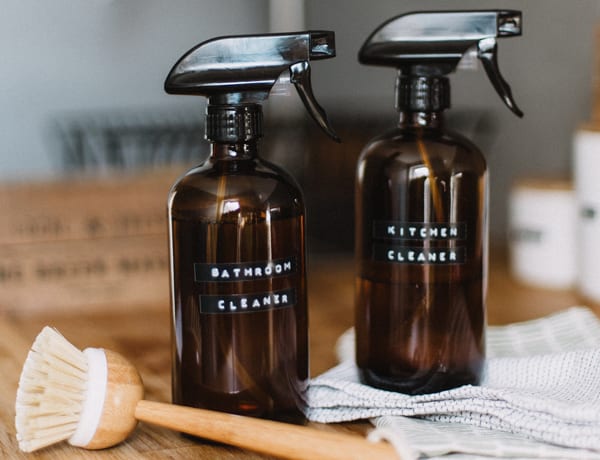
Recipe for DIY sustainable floor cleaner
To get those wooden floorboards looking fresh and polished again, mix:
- 1 tsp castile soap (another one you should probably add to your sustainable cleaning staples list)
- 10 drops of tea tree oil
- 4.5L warm water
Wipe or mop over the floor… and watch it shine!
Recipe for DIY sustainable oven cleaner
After you have steam-cleaned your oven with lemons, you can scrub it extra clean with this simple method:
- Coat the inside with a paste of water and bicarbonate of soda and water.
- Leave for at least an hour
- Scrub away, and with a good amount of elbow grease the dirt and grime should come off.
Recipe for DIY sustainable window cleaner
Want windows so clean you can see yourself in them again? No need for shop-bought chemicals, you can get streak-free glass with three simple store cupboard staples:
- 60ml white vinegar
- 1 tbsp of cornstarch
- 1 pint/475ml warm water
Top tip: dust the window with a dry cloth before applying the solution to avoiding scratching the glass.
You can find a few more handy eco-friendly cleaning tips and products recipes over at The Spruce.com.
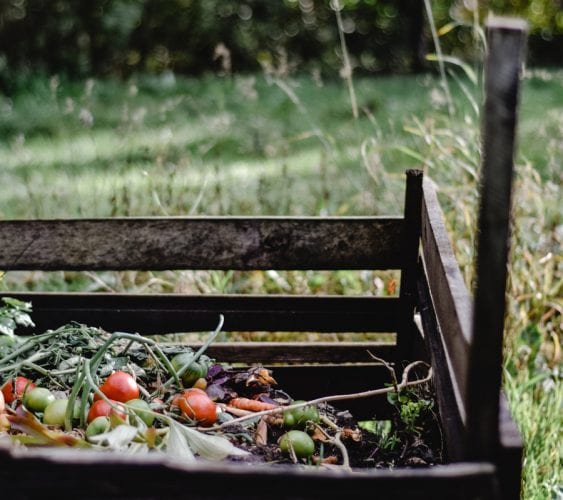
3. Re-purpose, Re-home & Recycle (or compost)
We all know the “Reduce, reuse, recycle” motto, but remember you can also re-purpose and re-home! When it comes to eco-friendly cleaning, you can get as creative as you like with this, but here are a few tips our team had to share:
A window cleaning method that might be news to you
Newspapers in their classic form might well be a thing of the past for many, but if you are still a stickler for your daily cuppa and paper, then make sure to hold on to it when you’ve finished reading!
To give your windows that extra shine, I use the eco-friendly DIY window cleaner recipe above combined with some old sheets of newspaper. Just make sure to stick to the black and white ink pages and avoid colour if possible. I then reuse the newspaper again (!) by lining my flower beds with it to keep the weeds at bay, and the vinegar will help with this too! – Eileen, Mooncup Ltd. Director
Reuse your rags
You might find yourself ripping through stashes or rolls of paper towels when cleaning, so choosing reusables over single-use items can go a long way to reduce the waste you create. Rather than opting for the classic synthetic microfibre cloths (microfibres which then end up in our waterways, rivers and oceans), why not repurpose any old natural fibre t-shirts you thought were destined for the waste pile too? Just cut old (clean) t-shirts into strips and you’re good to go.
Cleaning up after your pets
The beloved bicarb of soda is also a handy one if you’ve got furry friends. To remove any lingering dog or cat smells from your furniture, simply:
- Scatter dry bicarb on the sofa, armchair or rug that smells.
- Leave the powder on the surfaces for a few hours, or overnight.
- Vacuum or sweep (unplugging is best for the planet!) the powder away.
I like to save any plastic bags that have come with food, online orders etc. to use them as dog poo bags for those walks around town. Every little helps! – Amy, Mooncup Ltd. Creative Artworker
If you have any old rubber gloves hanging around from your cleaning sessions, they are also handy for removing pet hair from furniture. Rub a damp rubber glove over your furniture – it’s basically a hair magnet!
Re-home or compost, don’t bin!
There is no such thing as throwing something “away” as it’s all got to go somewhere… If you’re having a deep cupboard clear-out then why not give your items and clothes a new home? Charity shops are open again now and they are a great way of giving your items a new lease of life whilst supporting a great cause. Online stores like Ebay and Depop are also gaining popularity for re-homing your unwanted belongings.
Doing a deep clean of your fridge of all those lingering jars of condiments you haven’t touched in two years? Make sure to compost what you can! If you don’t have the space to build your own home compost heap, it is worth looking to your local council’s for information on compost collectives like this Bedford Square one, in Brighton.
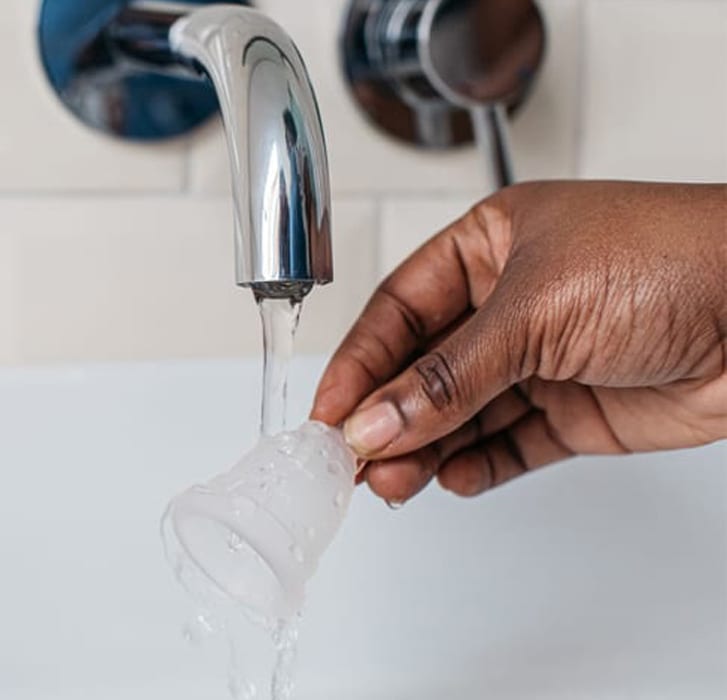
Bonus cleaning tip: eco-friendly cleaning tips to clean your Mooncup®
At Mooncup, we believe that less is more, and there are plenty of eco-friendly ways to clean your Mooncup menstrual cup that will make sure that it lasts you for years and years. You can forget those disposable wipes, sprays, washes and all the other accessories that you may be offered. They’re not needed to care for your cup, and their plastic packaging and microplastics aren’t great for environment either!
Before you use your Mooncup for the first time and after you’ve finished your period, we recommend giving it a thorough clean. To do this, all you need is a pan you use for this purpose and some water:
- boil the Mooncup, immersed in water, for 5 to 7 minutes. This is enough to sterilise the cup ready for use.
During your period, after emptying your Mooncup, all you need is to wash your Mooncup with water before reinserting.
If you are using the Mooncup out and about, in a public toilet or at work, you can always take your reusable bottle of water* into the cubicle with you to rinse your Mooncup as you would under the tap. You can also just wipe the Mooncup with toilet paper and re-insert.
*When travelling, make sure to use drinking water when cleaning your Mooncup.
As we mentioned earlier in the article, bicarbonate of soda is a handy one if you want to remove any natural staining that can appear over time on your Mooncup.
Find out more about the Mooncup menstrual cup and buy yours here.
You might also be interested in:
10 bathroom swaps to reduce your plastic waste
Our top tips for sustainable, eco-friendly camping
Pandemic is no excuse to give up our fight against single-use plastic
How to clean your Mooncup menstrual cup
How to have a vegan period


